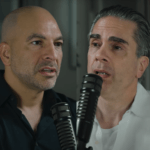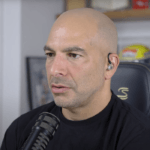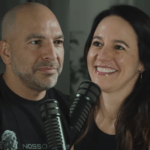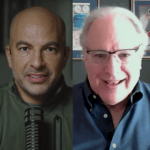Check out our 5-part series with Thomas Dayspring, M.D., FACP, FNLA, a world-renowned expert in lipidology:
- (October 15, 2018) Part I of V: An introduction to lipidology
- (October 16, 2018) Part II of V: Lipid metrics, lipid measurements, and cholesterol regulation
- (October 17, 2018) Part III of V: HDL, reverse cholesterol transport, CETP inhibitors, and apolipoproteins
- (October 18, 2018) Part IV of V: statins, ezetimibe, PCSK9 inhibitors, niacin, cholesterol and the brain
- (October 19, 2018) Part V of V: Lp(a), inflammation, oxLDL, remnants, and more
- (September 21, 2020) FOLLOW-UP: The latest insights into cardiovascular disease and lipidology
In this five-part series, Thomas Dayspring, M.D., FACP, FNLA, a world-renowned expert in lipidology, and one of Peter’s most important clinical mentors, shares his wealth of knowledge on the subject of lipids. In Part V, Peter and Tom talk about inflammation, endothelial health, and oxidative stress as they pertain to cardiovascular disease, and our attempts to monitor them using biomarkers. They also discuss a couple of very important risk factors that too few people (and doctors) know about. Tom closes the five-part series with a tragic story about his good friend that is likely all-too-common for many practicing physicians, that both haunts and motivates Dr. Dayspring to learn as much as he can about the number one killer in the United States.
Subscribe on: APPLE PODCASTS | RSS | GOOGLE | OVERCAST | STITCHER
We discuss:
- Lp(a) [2:30];
- Inflammation [17:15];
- Oxidative stress markers: Lp-PLA2 and oxLDL [20:45];
- Endothelial health markers: ADMA and SDMA [34:30];
- Remnants [43:45];
- Omega-3 fatty acids (EPA and DHA) and apoC-III [55:30];
- Red blood cells and cholesterol transport [1:07:45];
- Tom’s friend Earl [1:10:00];
- Peter’s friend JP [1:18:15]; and
- More.

Thomas Dayspring, M.D., FACP, FNLA
Thomas Dayspring, MD, FACP, FNLA is the chief academic officer for True Health Diagnostics, LLC. He provides scientific leadership and direction for the company’s comprehensive educational programs. Dr. Dayspring is a fellow of both the American College of Physicians and the National Lipid Association. He is certified in internal medicine and clinical lipidology.
Before relocating to Virginia in 2012, Dr. Dayspring practiced medicine in New Jersey for 37 years. Over the last two decades, he has given over 4,000 domestic and international lectures, including over 600 CME programs on topics such as atherothrombosis, lipoprotein and vascular biology, biomarker testing, and women’s cardiovascular issues.
Dr Dayspring is an Associate Editor of the Journal of Clinical Lipidology. He has authored or co-authored numerous manuscripts published across leading journals such as the American Journal of Cardiology, the Journal of Clinical Lipidology, and several lipid-related book chapters. He was the recipient of the 2011 National Lipid Association President’s Award for services to clinical lipidology. [truehealthdiag.com]
Disclosures:
- Employed full time for last three years by True Health Diagnostics, LLC, which provides biomarker diagnostics and clinical services to clinicians, patients, and healthcare organizations
- 2017: small consulting project for Abbvie
Tom on Twitter: @DrLipid






Great discussion. A boatload of information that would take many more hours and repeated listening to digest. My question pertains to omega 6:3 balance (or lack thereof). It’s been hypothesized by various sources whom I trust that excessive omega 6 fatty acid intake is a major culprit in the inflammatory cascade and consequently vascular disease. I was just wondering what your thoughts were on the science behind it, because there are reports I’m not inclined to believe that state just the opposite.